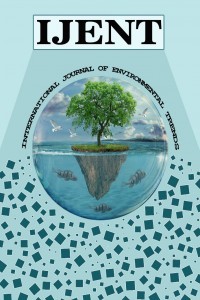Flow Rate Estimation Modelling in a Transmission Pipeline Using Response Surface Methodology (RSM)
Flow Rate Estimation Modelling in a Transmission Pipeline Using Response Surface Methodology (RSM)
District heating system; Flow rate; Response Surface Methodology (RSM); Transmission pipeline,
___
- J.W. Lund, D.H. Freeston and T.L. Boyd, 2005. Direct application of geothermal energy. Geothermics. 34, 691-727.
- J.W. Lund and T. Boyd, 2015. Direct Utilization of Geothermal Energy 2015 Worldwide Review. Proceedings World Geothermal Congress 2015. Melbourne-Australia.
- M. Parlaktuna, O. Mertoglu, S. Simsek, H. Paksoy and N. Basarir, 2013. Geothermal Country Update Report of Turkey (2010-2013). European Geothermal Congress. Pisa- Italy.
- A. Ragnarsson and I. Hrolfsson, 1998. Akranes and Borgarfjordur District Heating System. Geo-Heat Center Quarterly Bulletin, 19 (4).
- M. H. Dickson, and M. Fanelli (Eds.), Geothermal Energy Utilization and Technology, UNESCO, France, 2003. G. P. Ryan, 1981. Equipment Used in Direct Heat Projects. Geothermal Resources Council Transactions.5, Davis, CA, pp. 483-485.
- J.W. Lund, 2006. Direct Heat Utilization of Geothermal Resources Worldwide 2005. ASEG Extended Abstracts 2006: 18th Geophysical Conference.1-15.
- T. Akyol, 2016. Energy and Exergy Analysis of Bigadiç-Balıkesir Geothermal District Heating System, PhD Thesis, Department of Mechanical Engineering, Graduate School of Natural and Applied Sciences, Balıkesir University, Turkey.
- A.D. Karaoglan, N. Celik, 2016. A New Painting Process for Vessel Radiators of Transformer: Wet-on-Wet (WOW). Journal of Applied Statistics. 43 (2), 370-386.
- ISSN: 2602-4160
- Başlangıç: 2017
- Yayıncı: Muhammed Kamil ÖDEN
Muhammet Fatih ASLAN, Kadir SABANCI, Enes YİĞİT, Ahmet KAYABAŞI, Abdurrahim TOKTAŞ, Hüseyin DUYSAK
Thermodynamic Analysis of a Gas Turbine
Flow Rate Estimation Modelling in a Transmission Pipeline Using Response Surface Methodology (RSM)
UĞUR AKYOL, TUĞRUL AKYOL, A. DENİZ KARAOĞLAN, BEDRİ YÜKSEL, ASİYE ASLAN
ANN-BASED CLASSIFIER TRAINED BY BAYESIAN REGULARIZATION FOR WHEAT GRAINS THROUGH COLOUR FEATURE
Berat YILDIZ, Abdurrahim TOKTAŞ, Enes YİĞİT, Ahmet KAYABAŞI, Kadir SABANCI, Mustafa TEKBAŞ
The Applications of No-tillage in Turkey
Sefa Altıkat, Emrah Kuş, Hasan Kaan Küçükerdem, Zinnur Gözübüyük
